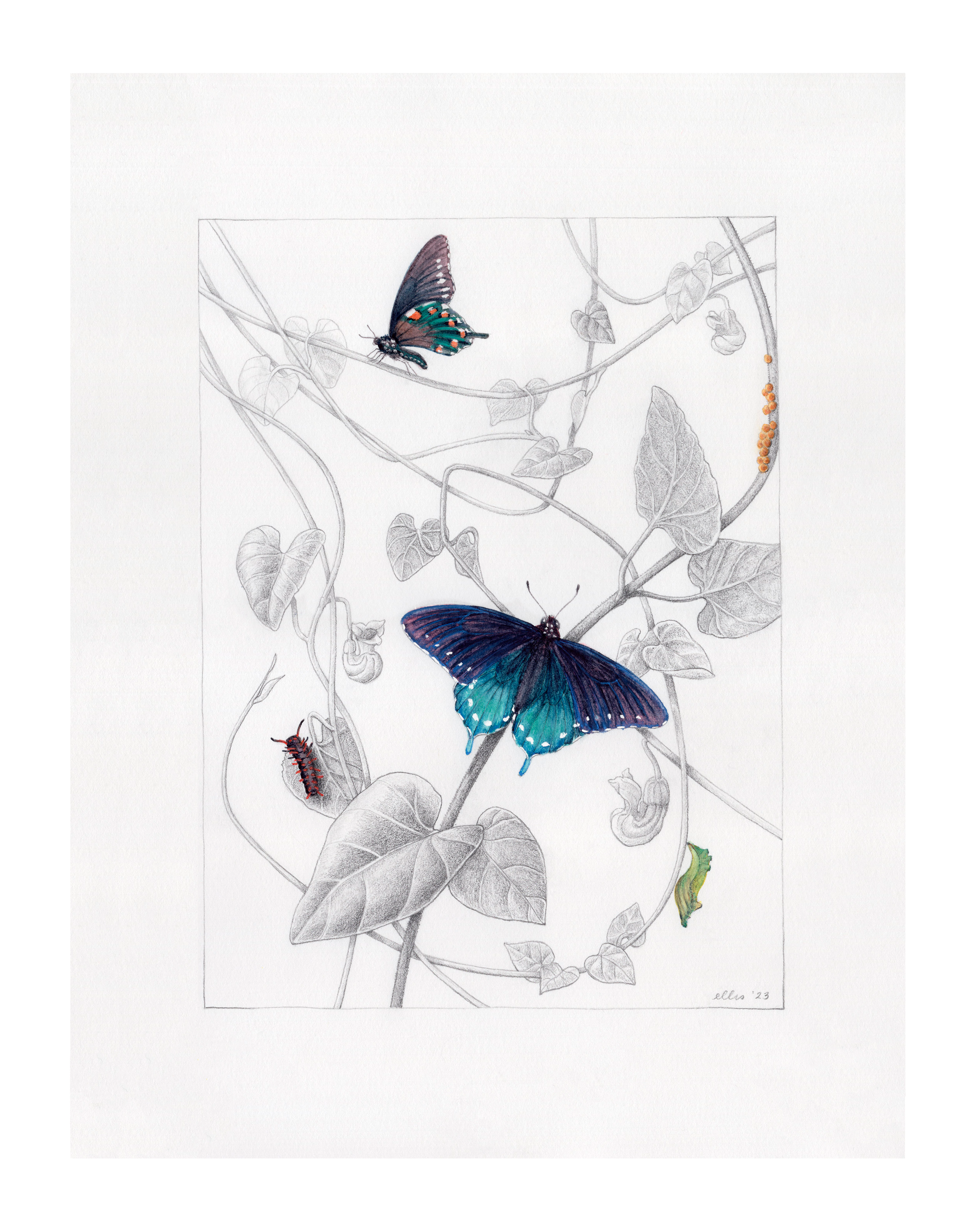California Pipevine Swallowtail
This illustrated “impossible landscape” shows the relationship between the California pipevine swallowtail (Battus philenor hirsuta) and its host plant, the California pipevine (Aristolochia californica). Here we see four stages of the butterfly’s life cycle, as well as a section of the habit of the plant.
Whle most illustrators portray this relationship with equal focus on the flowers of the pipevine, they do not hold a specific significance to the butterfly. The pipevine is pollinated by smaller insects who crawl inside its pitcher shaped blossom, not by butterflies.
The pipevine is the only plant on which this butterfly lays her eggs, and so its vines and lateral side of the leaves are of the most significance. She lays her eggs along the vine or on the lateral side of the leaves, which her larvae depend on for food.
I used grayscale media to describe the pipevine with shape and texture rather than by color or presence of flowers. This portrayal also offers a potential identification tool, as this plant has a short blooming season (late winter/early Spring) and so is without flowers for most of the year.
This piece was inspired by San Francisco resident and CalAcademy biologist Tim Wong’s successful rewilding of this then-endangered species in his own backyard.
Media: Graphite, gouache and watercolor on paper

